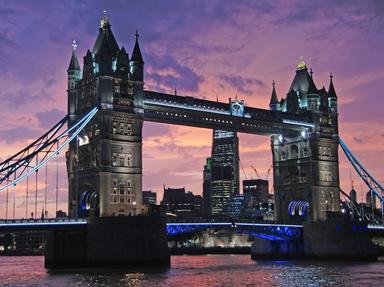
The Bridges of London Trivia Quiz
The history of London's bridges goes back 2,000 years. Given a clue for each, can you list London's road bridges in their correct order from west to east - that is, going downstream? Note: railway and footbridges are NOT included in this quiz!
An ordering quiz
by Southendboy.
Estimated time: 3 mins.
- Home
- »
- Quizzes
- »
- Geography Trivia
- »
- England
- »
- London